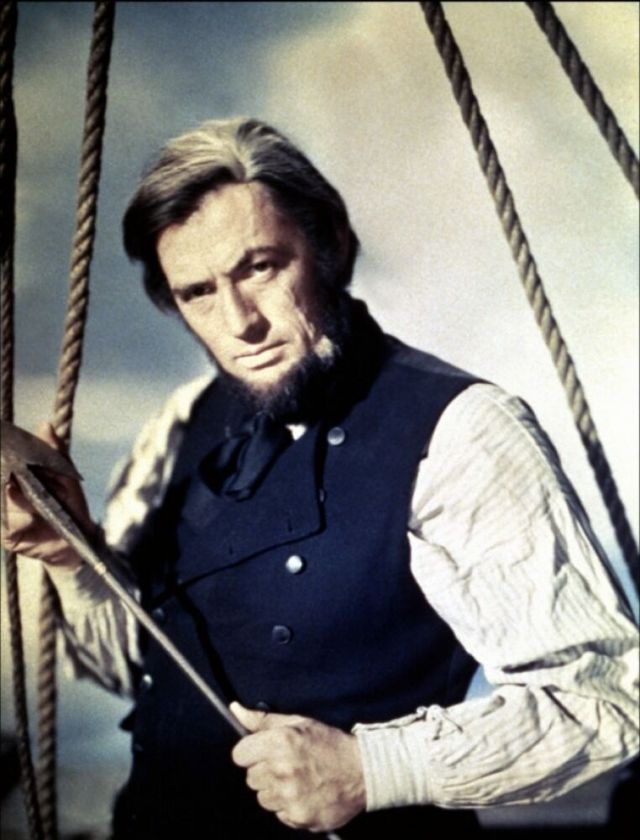#harpooneer

Herman Melville “Moby Dick’s father”
He was born in New York on August 1, 1819, into a family of eight children between brothers and sisters. Son of a rich merchant, from a very young age his father stimulated in him with the stories of his travels, the desire for adventure. He spent a comfortable life until the summer of 1830, when his father suffered a financial meltdown declaring the bank broken, later manifested a mental illness that led to his death. The impoverished family moved to the Hudson River village of Lansingburgh. Herman’s restlessness began to be felt, the desire to be economically independent and his adventurous spirit pushed him in June 1839 to embark as a hub on the “St. Lawrence”.

In 1841 he enlisted again as a sailor on the whaler “Acushnet”, bound for the Pacific Ocean, once in Nuku Hiva, in the Marquesas Islands, Melville deserted with a companion.

Two Typee novels followed and its continuation Omoo, autobiographical, relate precisely to this story, even if fictionalized. Probably from the experience of 18 months aboard the “Acushnet”, Melville reworked his memories, and from the information gathered by the sailors, he drew inspiration for his novel “Moby Dick”.

Queequeg - harpooneer
His life now set, he embarked continuously, and from his experiences he wrote autobiographical novels. In 1847 Melville married Elizabeth Shaw in Boston, and here his seafaring adventures ended, he bought a farm in Pittsfield, and in February 1850 he put his hand to Moby Dick, who finished and published in 1851.

After the successes of Typee and Omoo his works were received with decreasing favor; in 1867 the eldest son Malcom killed himself in his parents house, the second son died later after a wandering life. Melville died in New York on September 28, 1891; in 1892, new editions of his four most successful novels were published by Arthur Stedman: Typee, Omoo, White-Jacket and Moby Dick.

NOTE: The name of the species “Leviathan melvillei”, a Miocene cetacean similar to modern sperm whales, has been dedicated to Melville, with reference to the beast protagonist of his novel Moby Dick.

Captain Ahab (Gregory Peck) Moby Dick, the white whale 1956 - film director John Huston.
Moby Dick, the white whale
The novel by Herman Melville (1819-1891) is today considered the greatest example of an American novel of the nineteenth century, even if the work was rediscovered only in the 20s of the last century, when it was indicated as the cornerstone of the literary tradition American.

Queequeg (Friedrich von Ledebur) Moby Dick, the white whale 1956.
The novel is the first person account of the protagonist Ismaele of the expedition of a whaling ship, the Pequod, in pursuit of the mythical “white whale” Moby Dick.

In command of the ship is the charismatic figure of Captain Ahab, obsessed with revenge against Moby Dick who in a previous hunting trip, had torn his leg. Moby Dick, alternating with white whale hunting scenes (partly based on real events), is a work of extreme complexity and for over a century critics have tried to illuminate the numerous dark corners of this vast and so articulate.
If at first glance the novel seems dominated by the theme of adventure and exploration, in the course of reading the mythical and almost mystical-religious dimension of Moby Dick’s pursuit is stratified, so much so that the parallels with the Bible, explicit or under understood, they are innumerable, assuming then a theatrical aspect, to the Shakespearean tragedy, from an adventure by sea to a grandiose epic poem.


Model of the “San Juan” whaler built in 1563, it hit the rocks and soon sank in 1565. Underwater archaeologists have found its remains in the Red Bay in Canada. Also a replica is present at the Albaola Maritime Museum, Pasaia San Pedro, Basque Coast, Spain.
